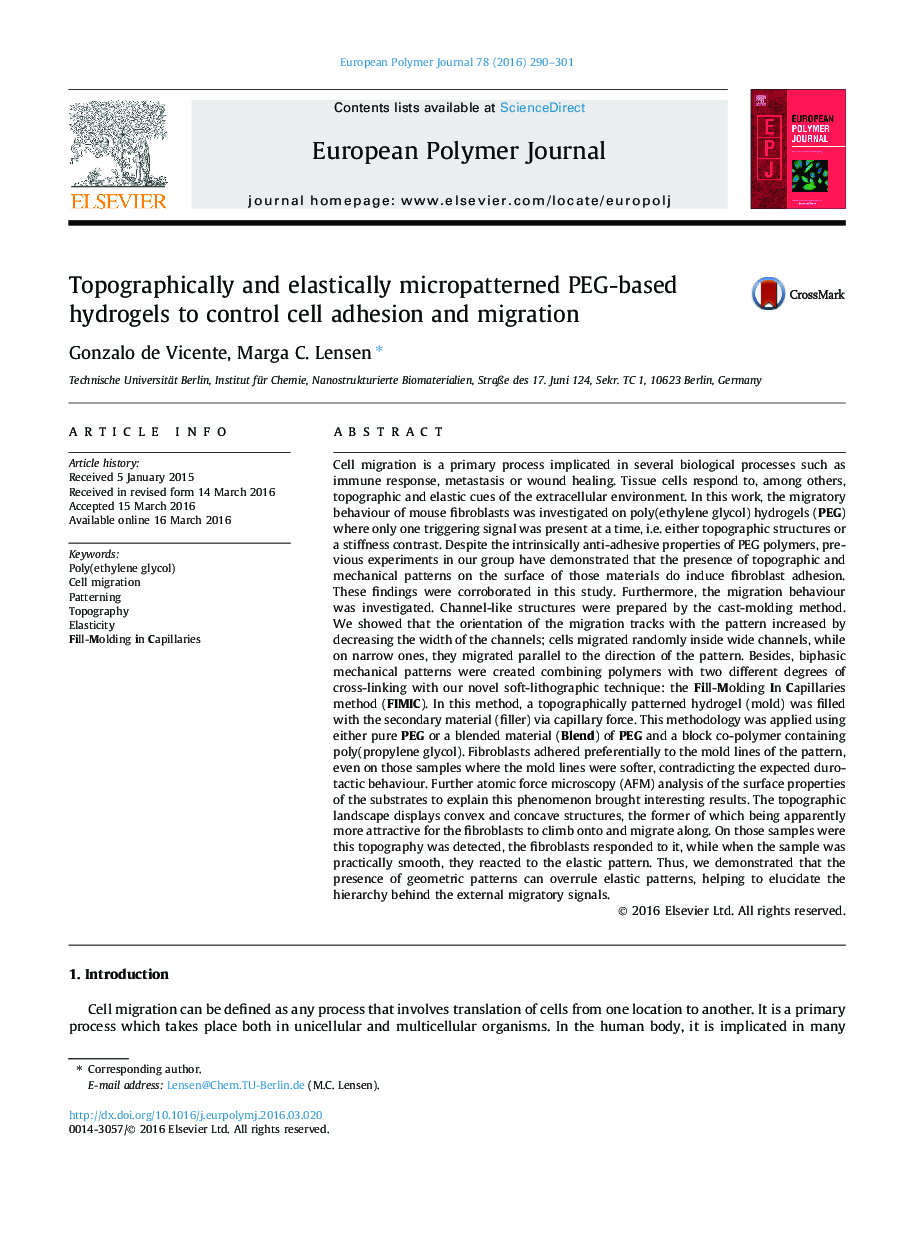| کد مقاله | کد نشریه | سال انتشار | مقاله انگلیسی | نسخه تمام متن |
|---|---|---|---|---|
| 1394666 | 1501357 | 2016 | 12 صفحه PDF | دانلود رایگان |

• Cells display durotaxis behaviour on topographically smooth elastic patterns (FIMIC).
• Our elastic patterns result in effective geometric confinement of cell migration.
• When a topography is present, cells prefer to migrate along the convex features.
• Cell migration along topography (contact guidance) competes with durotaxis.
• Our FIMIC method reveals the competition between physical and mechanical cues.
Cell migration is a primary process implicated in several biological processes such as immune response, metastasis or wound healing. Tissue cells respond to, among others, topographic and elastic cues of the extracellular environment. In this work, the migratory behaviour of mouse fibroblasts was investigated on poly(ethylene glycol) hydrogels (PEG) where only one triggering signal was present at a time, i.e. either topographic structures or a stiffness contrast. Despite the intrinsically anti-adhesive properties of PEG polymers, previous experiments in our group have demonstrated that the presence of topographic and mechanical patterns on the surface of those materials do induce fibroblast adhesion. These findings were corroborated in this study. Furthermore, the migration behaviour was investigated. Channel-like structures were prepared by the cast-molding method. We showed that the orientation of the migration tracks with the pattern increased by decreasing the width of the channels; cells migrated randomly inside wide channels, while on narrow ones, they migrated parallel to the direction of the pattern. Besides, biphasic mechanical patterns were created combining polymers with two different degrees of cross-linking with our novel soft-lithographic technique: the Fill-Molding In Capillaries method (FIMIC). In this method, a topographically patterned hydrogel (mold) was filled with the secondary material (filler) via capillary force. This methodology was applied using either pure PEG or a blended material (Blend) of PEG and a block co-polymer containing poly(propylene glycol). Fibroblasts adhered preferentially to the mold lines of the pattern, even on those samples where the mold lines were softer, contradicting the expected durotactic behaviour. Further atomic force microscopy (AFM) analysis of the surface properties of the substrates to explain this phenomenon brought interesting results. The topographic landscape displays convex and concave structures, the former of which being apparently more attractive for the fibroblasts to climb onto and migrate along. On those samples were this topography was detected, the fibroblasts responded to it, while when the sample was practically smooth, they reacted to the elastic pattern. Thus, we demonstrated that the presence of geometric patterns can overrule elastic patterns, helping to elucidate the hierarchy behind the external migratory signals.
Figure optionsDownload as PowerPoint slide
Journal: European Polymer Journal - Volume 78, May 2016, Pages 290–301